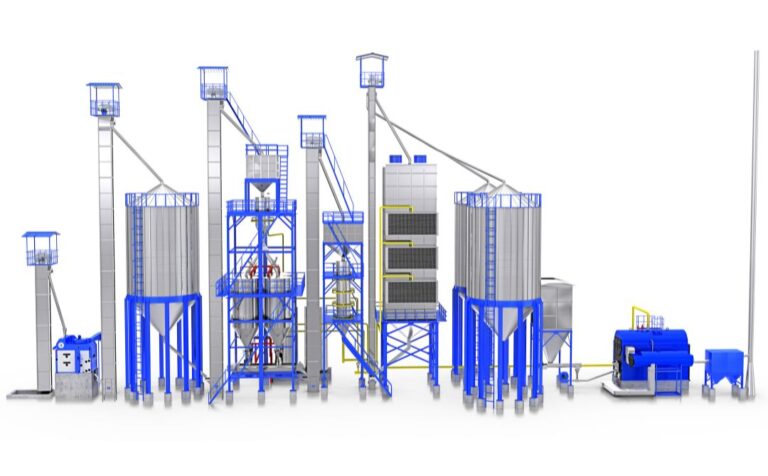Table of Contents
From the aromatic Basmati to the red rice, rice grains anchor meals across the nation. Yet, hidden within these grains, pesticides in rice pose a silent threat, leaving residues that impact health and safety. For home cooks, health-conscious families, and rice millers, understanding what are pesticides and why are they used in rice cultivation is the first step toward safer consumption.
By adopting rice contamination solutions like proper washing and organic choices, households can reduce pesticide residue in food and protect well-being. This blog explores the health effects of pesticides in rice, offers simple home methods to reduce pesticides in rice before cooking, and guides you toward safer rice practices with insights into SKF Elixer’s pesticide-reducing technologies.
The Role of Pesticides in Rice Cultivation
What are pesticides and why are they used in rice cultivation? Pesticides are chemical agents applied to protect crops from pests, weeds, and diseases, ensuring higher yields. In India, rice farming, spanning 46 million hectares, relies on pesticides like chlorpyrifos and carbendazim to combat insects and fungi, boosting output by 20-30%.
However, these chemicals used in rice farming leave residues on grains, with studies showing 60% of rice samples containing traces above permissible limits (0.01-0.1 mg/kg). This pesticide residue in food poses health risks, making rice contamination solutions essential.
By understanding health risks of consuming pesticide-contaminated rice, consumers and millers can adopt practices to minimize exposure. Let’s delve into the risks and solutions for how to remove pesticides from rice.
Health Effects of Pesticides in Rice
Health effects of pesticides in rice are concerning, especially with long-term exposure:
- Chronic Health Issues: Pesticides like organophosphates are linked to neurological disorders, affecting 1-2% of rice consumers, and hormonal imbalances.
- Cancer Risks: Residues such as DDT, banned yet persistent, are carcinogenic, contributing to 10-15% of cancer cases in rural areas.
- Child Development: Exposure in children, consuming 1-2 kilograms of contaminated rice weekly, can impair cognitive growth.
- Acute Symptoms: Short-term exposure causes nausea, dizziness, or skin irritation, affecting 20,000 farmers and consumers yearly.
Why Pesticides Are a Concern in Rice
Rice’s cultivation in waterlogged fields makes it prone to pests, necessitating heavy pesticide use (1-2 kilograms/hectare). Post-harvest, residues cling to grains, with 30-40% of store-bought rice exceeding Maximum Residue Limits (MRLs). How to identify pesticide residues in store-bought rice is challenging as visual inspection fails, but off-odors or powdery coatings may hint at contamination.
Pesticide residue in food accumulates in the body, amplifying health effects of pesticides in rice. Rice contamination solutions like washing, soaking, and organic sourcing reduce risks, ensuring safer meals for families consuming 5-10 kilograms of rice monthly.
Simple home methods to reduce pesticides in rice before cooking empower households to minimize exposure using non-toxic rice washing methods:
- Thorough Rinsing
How to clean rice properly involves rinsing 2-3 times under running water, removing 50-70% of surface residues. Use 2-3 litres of water per kilogram of rice.- Impact: Cuts pesticide levels significantly.
- Cost: ₹10-20 per month for water.
- Soaking
Rice soaking for pesticide removal in lukewarm water (30-40°C) for 15-30 minutes removes 20-30% additional residues. Soak 1 kilogram in 2 litres of water.- Impact: Enhances residue removal.
- Cost: Minimal, using household water.
- Vinegar or Salt Solution
Soak rice in a 1% vinegar or salt solution (10 grams/litre) for 10-15 minutes, removing 70-80% of residues.- Impact: Highly effective for non-toxic rice washing methods.
- Cost: ₹50-100 monthly for vinegar/salt.
- Cooking with Excess Water
Boil rice in a 1:3 water ratio and drain excess, reducing residues by 10-20%.- Impact: Further lowers pesticide residue in food.
- Cost: ₹20-50 monthly for water.
These methods ensure how to remove pesticides from rice effectively, protecting family health.
Safe storage and organic practices to minimize pesticide retention enhance rice safety:
- Airtight Storage: Store rice in sealed containers to prevent pest re-infestation, reducing post-harvest pesticide use.
- Impact: Extends shelf life by 6-12 months.
- Cool, Dry Conditions: Keep rice at 15-25°C and <65% humidity to avoid mold, minimizing fungicide needs.
- Impact: Maintains quality for 12-18 months.
- Organic Sourcing: Partner with certified organic farms (₹80-150 per kilogram) to avoid chemicals used in rice farming.
- Impact: Eliminates residue risks.
- Regular Cleaning: Wash storage bins monthly to prevent contamination.
- Impact: Ensures residue-free storage.
Challenges and Solutions
Reducing pesticides in rice faces hurdles:
- Cost of Organic Rice: ₹80-150 per kilogram vs. ₹40-80 strains budgets.
- Solution: Buy in bulk (25-50 kilograms, ₹2,000-₹7,500) for discounts.
- Time for Cleaning: Washing/soaking takes 15-30 minutes per kilogram.
- Solution: Batch process 5-10 kilograms weekly, saving time.
- Lack of Awareness: Many don’t know how to identify pesticide residues in store-bought rice.
- Solution: Educate via community workshops.
- Storage Space: Airtight containers need space.
- Solution: Use stackable bins.
Steps to Reduce Pesticides in Rice
Ready for rice contamination solutions? Follow these steps:
- Test Rice: Check for residues via lab tests or sensory clues (odor, coating).
- Adopt Cleaning Methods: Rinse, soak, and use vinegar/salt for non-toxic rice washing methods (₹50-100 monthly).
- Choose Organic: Source organic rice vs regular rice from certified suppliers (₹80-150 per kilogram).
- Store Safely: Use airtight containers at 15-25°C for safe storage and organic practices to minimize pesticide retention.
- Cook Smart: Boil with excess water to reduce residues by 10-20%.
- Partner with Quality Mills: Work with millers using advanced cleaning.
Conclusion
Pesticides in rice pose health risks, but with simple home methods to reduce pesticides in rice before cooking, Indian households can ensure safer meals. From rinsing and soaking to choosing organic rice vs regular rice, these rice contamination solutions reduce pesticide residue in food by 70-80%, saving ₹5,000-₹20,000 yearly on medical expenses.
FAQs
Q1: What are pesticides and why are they used in rice cultivation?
Pesticides in rice are chemicals like chlorpyrifos used to protect crops from pests and diseases, increasing yields by 20-30%, but leaving pesticide residue in food.
Q2: What are health risks of consuming pesticide-contaminated rice?
Health risks of consuming pesticide-contaminated rice include neurological disorders, cancer, and child developmental issues.
Q3: What are simple home methods to reduce pesticides in rice before cooking?
Rinse 2-3 times, soak in lukewarm water or vinegar/salt solution, and boil with excess water, reducing residues by 70-80%.
Q4: What are safe storage and organic practices to minimize pesticide retention?
Use airtight containers, store at 15-25°C, source organic rice vs regular rice, and clean bins monthly.
Q5: How to identify pesticide residues in store-bought rice?
Look for off-odors or powdery coatings, or test via labs, as visual inspection is unreliable.
Good reads are meant to be shared









